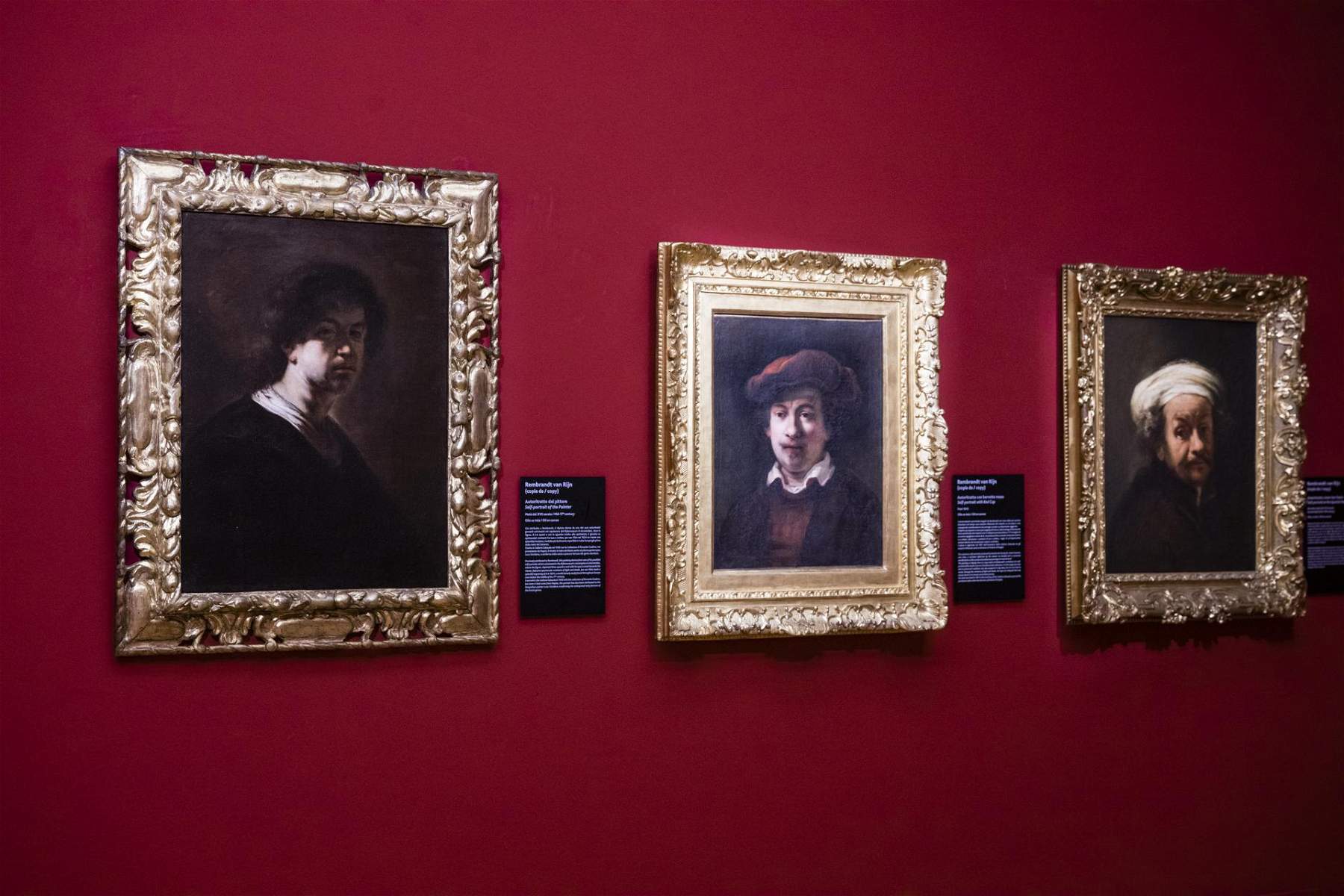Turin, at the Royal Museums an exhibition dedicated to Rembrandt with some 20 works
A dossier exhibition dedicated to Rembrandt (Rembrandt Harmenszoon van Rijn; Leiden, 1606 - Amsterdam, 1669): this is Rembrandt meets Rembrandt. Dialogues in the Gallery, the exhibition that the Royal Museums of Turin are dedicating to the great Dutch master of the seventeenth century, with a selection of twenty-two works including paintings, drawings, and etchings set up in the Spazio Scoperte of the Galleria Sabauda from December 14, 2022 to April 16, 2023.
The ideal centerpiece of the exhibition is the Supper at Emmaus from the Musée Jacquemart-André in Paris, on loan to the Royal Museums thanks to the exchange policy adopted to strengthen collaboration between Italian and European cultural institutions. The work is set against the Portrait of an Old Sleeper from the Galleria Sabauda, one of only three paintings by the artist in the national collections. The two works, which can be dated to 1629, are representative of Rembrandt’s early phase and constitute significant examples of the painter’s mastery in the use of color, modulation of light and poetic transfiguration of subjects drawn from everyday reality and sacred history.
In the Sabauda Gallery panel, acquired in 1866, the figure of the sleeping old man is plunged into a sometimes impenetrable darkness: only the man’s face and hands appear in full light, illuminated by the faint embers of the hearth. The artist enhances the details, intensifying the effect in a deliberately unreal way. In the French canvas, the prodigious appearance of Christ to the apostles is built on the contrast between darkness and light, which is also mystical light, the image of divine revelation. In the two paintings under comparison, the realistic depiction of the environment and characters, combined with the expressive and symbolic use of light, recalls the innovations introduced by Caravaggio in sacred painting in the first decade of the seventeenth century, which were promptly taken up by the naturalistic schools of painting in various Italian and European centers.
The display is also enhanced by a multimedia support, created in collaboration with VisivaLab, which allows visitors to explore the Turin painting through a very high resolution image to learn its history, many curiosities and discover who might be hiding behind the face of the sleeping old man. Accompanying the two main works are a number of drawings from the Royal Library assigned to Rembrandt, including a sketch of an antique bust unanimously recognized as an entirely autograph work, as well as graphic evidence from his workshop and drawings from his studio, which give an account of the artist’s inexhaustible inventive capacity.
In Rembrandt’s career,engraving occupies a place of absolute prominence, particularly through the etching technique: his production, exceptional in its breadth and variety, documents a thorough knowledge of techniques and an unceasing search for new expressive solutions. This is evidenced by the nucleus of prints belonging to the collections of the Royal Library and the Savoy Gallery with portraits, landscapes and religious themes. Rembrandt’s fame, the knowledge of his style and the spread of his inventions are fostered by the circulation of autograph self-portraits, paintings, drawings or engravings, to which very soon are added a hardly quantifiable number of copies of his famous paintings and various forms of emulation by pupils and contemporaries, devoted to faithfully interpreting the master’s hand. Some of these works, including the alleged self-portrait in the Gualino Collection, purchased as an autograph in the early 1920s and long believed to be a tribute to Rembrandt by the Neapolitan painter Luca Giordano, conclude the itinerary, illustrating the spread of the Leiden artist’s language in Nordic figurative culture and the importance of his compositions in genre painting and portraiture.
“The exhibition proposes an itinerary on the extraordinary heritage related to the Dutch master preserved at the Royal Museums,” explains director Enrica Pagella, “and aims to bring to the public’s attention the rich collections of Flemish and Dutch art, which represent a peculiarity, both in terms of consistency and quality, in the panorama of Italian public collections.”
“At the center of attention,” observes Annamaria Bava, head of the Royal Museums’ art and archaeology collections, “is one of the masterpieces of the Sabauda Gallery, in which the young Rembrandt experiments with his mastery in the rendering of browns and which in the exhibition can also be admired by grasping details that at first escape view.”
Opening hours: Tuesday through Sunday from 9 a.m. to 7 p.m. The ticket office closes one hour earlier. Tickets (for all Royal Museums): full 15 euros, reduced 2 euros for 18 to 25 year olds, free for under 18s, people with disabilities and one accompanying person, teachers with school groups, tour guides with groups, Ministry staff, Abbonamento Musei, Torino+Piemonte Card holders, ICOM card, journalists regularly registered with the Ordine dei Giornalisti. For information: https://museireali.beniculturali.it/
 |
| Turin, at the Royal Museums an exhibition dedicated to Rembrandt with some 20 works |
Warning: the translation into English of the original Italian article was created using automatic tools. We undertake to review all articles, but we do not guarantee the total absence of inaccuracies in the translation due to the program. You can find the original by clicking on the ITA button. If you find any mistake,please contact us.





























